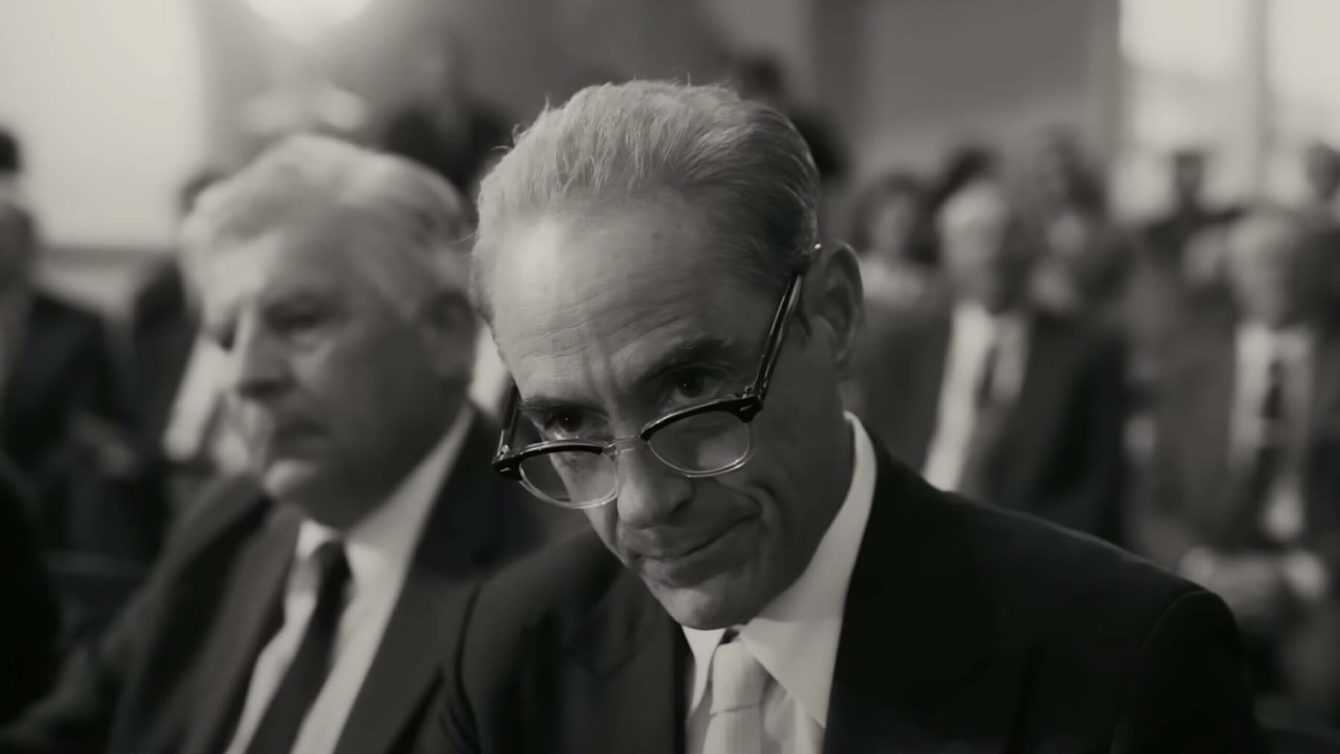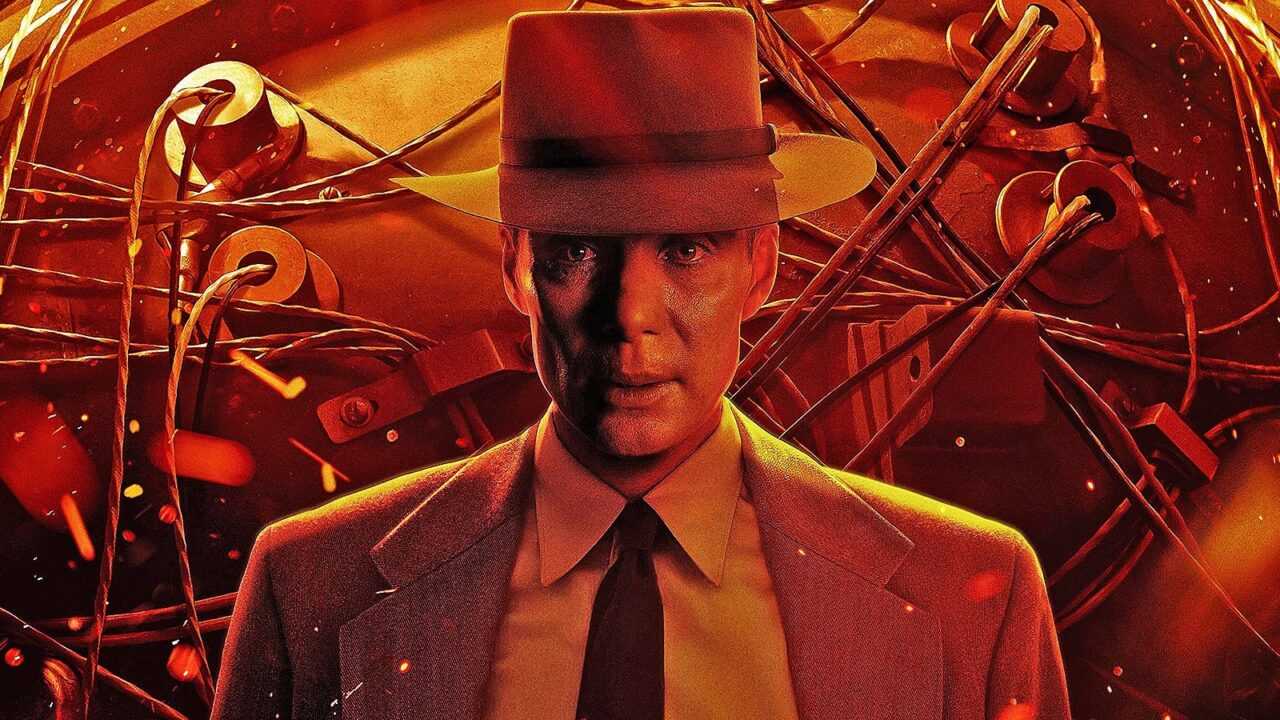Let’s try to analyze Christopher Nolan’s latest film, yet another masterpiece in his career, in this Oppenheimer review
ORIGINAL TITLE: Oppenheimer. TYPE: Drama, Biography, History. NATION: United States of America. REGIA: Christopher Nolan. CAST: Cillian Murphy, Emily Blunt, Kenneth Branagh, Florence Pugh, Josh Hartnett, Jack Quaid, Matt Damon, Gary Oldman, Robert Downey Jr., Gustaf Skarsgård, Rami Malek, Scott Grimes, Dane DeHaan, Michael Angarano, Benny Safdie, David Krumholtz, Matthew Modine, Alden Ehrenreich, Dylan Arnold, Olivia Thirlby. DURATION: 180 minutes. DISTRIBUTOR: Universal Pictures. CINEMA OUTPUT: 23/08/2023.
Christopher Nolan looks back on a career in which he didn’t miss a beatindeed, each of his films has entered the annals of cinema in its own way. An advocate of progress both in storytelling and in technical terms, he is in fact one of the few directors who, thanks to his success, still has the possibility of obtaining large budgets for epoch-making films. The fact is that Oppenheimer too, like all of his predecessors, carried on his shoulders heavy expectations, however in some way multiplied by the fact that (not in Italy, but in the rest of the world) the release of the film in theaters was scheduled to coincide with Barbie. Clash actually more pumped up by productions than real.
Il 70mm. L’IMAX. The explosions shot from life and not done with CGI. Yet it’s not a film in which only the technique stands out, because from the beginning (actually a bit slow) to the end it is full of a political message that can sometimes be deceiving, but which is ultimately very clear. To convey this message, an extremely controversial historical figure is chosen, both in the outward image and in the abyss of his inner moral dilemmas, who however it prophetically symbolizes the dilemma that arises when any man is given too much power. It is no coincidence that the screening begins with a mythological reference to Prometheus and his eternal condemnation: the story of the life of a neo-Prometheus, who instead of delivering fire for progress to man becomes its executioner in spite of himself reveals an ethical treatise on the twentieth century but also an omen of the future.
Plot and Trailer | Oppenheimer review
In 1926, the 22-year-old graduate student J. Robert Oppenheimer studies with experimental physicist Patrick Blackett at the Cavendish Laboratory in Cambridge. An encounter with Niels Bohr opens the door to a PhD for him. Later he meets the theoretical physicist Werner Heisenberg at a conference in Switzerland. Returning to the United States with the intention of expanding quantum physics research there, he began teaching at the University of California and at the California Institute of Technology. He meets his future wife, Katherine “Kitty” Pueningbiologist and former communist, and is also in an on and off relationship with Jean Tatlocka member of the Communist Party of the United States of America.
In 1942, in the midst of World War II, US Army General Leslie Groves recruits Oppenheimer to lead the so-called Manhattan Project to develop an atomic bomb after assuring that he has no Communist sympathies. Oppenheimer, who is of Jewish ancestry, is particularly pressured that the Nazis could complete their nuclear weapons program, spearheaded by Heisenberg. He assembles a science team that includes Edward Teller and Isidor Isaac Rabi at Los Alamos in New Mexico, and also collaborates with scientists Enrico Fermi and David L. Hill. After Germany’s surrender, some project scientists question the bomb’s relevance, while Oppenheimer believes its use will quickly end the ongoing war in the Pacific, saving Allied lives, with no small doubt: he and Albert Einstein had discussed the remote possibility that an atomic detonation could set off a chain reaction and destroy the world. The Trinity test is successful and President Harry S. Truman orders the bombing of the cities of Hiroshima and Nagasaki, forcing Japan’s surrender. Oppenheimer is presented to the public as the “father of the atomic bomb,” but the immense destruction and mass casualties haunt him.

Now I have become Death, the destroyer of worlds | Oppenheimer review
Oppenheimer is at the same time a Nolanian film that partially breaks its classic temporal plot pattern, given that it is actually quite linear in the story, beyond a few flashbacks or flash forwards. At the same time it is a blatantly Nolanian film, in manifesting an almost obsessive interest in reality, its composition and decomposition. To how reality is seen, understood, manipulated, reconstructed, reinvented. Oppenheimer is a film that tells us, or tries to tell, that extraordinary mystery, partly unsolved even in this film, which was Robert Oppenheimer’s gaze on the world, about physics, about building an ultimate weapon that caused death and destruction on a previously unheard-of scale and changed the history of the world. The way chosen to do this is the chronicle sometimes dry, sometimes permeated by a horrific atmosphere.
At times (not least the elegant jump scares) the film could almost be defined as a horror. If Nolan has always looked to physics or scientific genius (just think of Nikola Tesla in The Prestige, or to the plots of Interstellar, Inception and Tenet), he has also always done so by trying to bring their implications to the screen in visual and spectacular terms. trying to give shape to the complex geometries and chaotic and impossible architectures that ideas and actions required. In Oppenheimer this imagination is as strong as the intensity of Cillian Murphy’s close-ups: two blue eyes that pierce the screen constantly questioning the viewer about what is being told to him. In Oppenheimer, on several occasions, it is said that no one really knows what goes through the mind of the physicist. What are his thoughts, his theories, his strategies. Its moral positions, its scientific and philosophical goals. No one, perhaps even Nolan, can fully decipher the mystery of a man who recklessly and obsessively flirted with the apocalypse, chasing an outcome with unparalleled determination, and at the same time being bent and wounded in such profound and shocking ways. from that same result, quintessential symbol of human ambition, of its destructive and creative impulses together, of the contradictions, risks and ambiguities of progress.

The human factor | Oppenheimer review
Without wishing (nor being able, given that subjectivity always finds room in ambiguity) to reveal too much about the meaning of the film, we can analyze the pragmatic aspects of the film. The very rich cast stands out above all, which Nolan makes to perform in a spectacular way: Not only is Cillian Murphy frankly huge, but Robert Downey Jr is also an equal fighter on that front. As well as female leads Emily Blunt and Florence Pugh, and then Matt Damon and Rami Malek, who despite appearances has a key role. In this film you will notice that all the actors, who are many and often well-known, play at the highest levels, while in fact revolving around the protagonist, his torments, his impulses and his reactions who find themselves at an unstable crossroads between pure instinct, rational genius and megalomania.
The impression they give, in a film of enormous proportions, is that of bringing the viewer “to the ground”, reminding that history is actually made by men and women. Doubts, clashes, uncertainties, machinations, hesitations, distortions, betrayals, fears, anxieties: the intuitions of Oppenheimer and, before and after him, of an entire school of thought that invented quantum physics at the very moment when, as Nolan shows at the beginning of the film, others were creating psychoanalysis and abstract art they change the fact that the future can only be uncertain.

Conclusions
With Oppenheimer Nolan raises the bar once again: it is his most ambitious film, the one in which it has invested the most so far. We can say that the experiment it is perfectly successful. Speaking of physics, the filmmaker manages to overcome the limits of a classic idea of cinema and, in telling a human story in an almost impersonal way, seeks and finds balance in continuous movement.
Yet another Nolan masterpiece
Plus points
- Unique and excellent visual solutions
- Excellent performances by the very rich cast
- Intimate insight into historical figures
Points against
- It struggles to mesh, but trust in history pays off
Are you looking for new movies and new TV series to watch? Discover the new Disney+ subscription, the streaming home of Disney, Marvel, Pixar, Star Wars, National Geographic and now Star too. Subscribe now to only 8.99 euros per month on this page.















Leave a Reply
View Comments